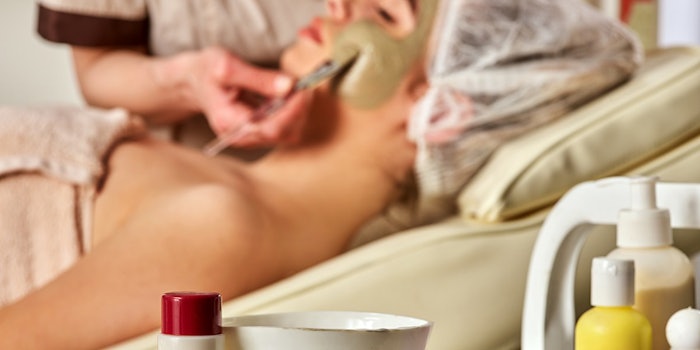
Many esthetician go into the spa and skin care industry to make people feel good about themselves by making them look good. So what happens if they don’t? What happens if the opposite occurs and they feel worse?
When something goes wrong in the treatment room, it can be jolting, especially if you’re not prepared for it. If you scar or injure a client, it can shake your faith in your profession. Rarely does it get to the level of life or death; however, knowing what to do in any situation is crucial to be an effective esthetician.
“Stay calm. Keep your cool. Make sure you handle it like a professional.” -Jesse Cormier, senior director for Associated Skin Care Professionals
“If you do injure a client, you need to first assess the injury. Ask the client what his or her pain level is, and if necessary, call 911 immediately. The longer you delay, the more severe the injury may become,” said Jesse Cormier, senior director for Associated Skin Care Professionals.
Protecting Your Practice
In medicine, there is a phrase that says “an ounce of prevention is worth a pound of cure.” In esthetics, there is no difference. By preparing yourself, you increase the chances of your clients leaving happy and healthy. To prevent tragedies in the treatment room, Cormier recommends you consider these things:
-
Intake, intake, intake. The start of every treatment should involve a comprehensive intake form. Even if this is a client you see on a regular basis, make sure to get an updated form every time he or she comes in. Things can dramatically change between treatments. They might be on new medication, received a similar treatment recently or any number of things. Getting an intake form each visit is crucial.
-
Get facts. Though your intake form is your first line of defense, it doesn't have to be your only line of defense. Taking before and after photos is another way of protecting your practice.
-
Scope of practice. This goes without saying but don’t do anything that you aren’t capable or trained to do. If there is a new piece of equipment that your spa receives, check the manual for the recommended hours of training. If you are unsure about state laws and your practice, contact a professional in the field or contact their state board.
-
Commit to education. Esthetics is a life-long learning career. New products and treatments are coming out all the time. Make sure that you are receiving educational information from reliable sources.
The First Moments
Any number of things can go wrong in the treatment room. From a simple trip over a loose chord to product reactions, trouble can come from anywhere. There are other situations that can be simply out of your control. If a client has a heart attack in your treatment room, it is most likely not due to your treatment. However, you will need to respond in a way that will help your client receive proper care.

“The first thing to do is make sure you have an idea of what to do if you have an incident," said Cormier. "If you are hysterical, the client will be as well. Keep calm and make sure you handle it like a professional.”
Depending on the severity of the incident, this will dictate an esthetician’s next step. If an accident like a trip or fall occurs, make sure the client is responsive. If he or she ever becomes non-responsive, call 911 immediately.
Product reactions call for a different approach. In this case, the esthetician will remove the product from the client and then contact a manager or supervisor. If you are in a medical spa setting, the esthetician should also contact a medical personal at your facility.
“If your client has an adverse reaction to a product, you should immediately remove the product, assess how severe the reaction is and determine whether they need emergency treatment or not,” said Cormier. “You should report this to your medical director or your spa manager after you’ve taken care of your client. You can also check the Safety Data Sheet (SDS) for the product that caused the reaction for first-aid instructions.”
Get Insurance Involved
After the client is taken care of and immediate issues removed, a spa owner should call his or her insurance company. Though you might feel pressured to not call them out of fear, getting insurance involved is the safest and smartest way to avoid further problems.
“In the treatment room, the esthetician should never leave the client. Never, ever. Product reactions can be very swift and very damaging."
Insurance will provide next steps on what you should and shouldn’t do. Among the insurance company’s first questions will most likely be a detailed account of what happened from the esthetician. They will want to know about your intake form, products used, if you have before- and-after photos and anything else that you can provide.
They will also give you advice and tips on what not to say. Among one of the things that they might tell you is not to say anything along the lines of “we will pay for any hospital bills” or any damages. Insurance companies see this as an admission of guilt and might refuse medical expenses.
If money does come up during the incident, Cormier suggests telling the client that, “Right now I’m just concerned about your well-being and safety.” By getting the client proper care and contacting your insurance company, you have already lessened any financial impact.
Staying Present
Probably the best advice is the most straightforward advice. In order to prevent tragedies, stay with your client the entirety of the treatment. In high volume spas, there might be a certain pressure to get guests in and out, which can result in cutting corners. However, those corners can be crucial.
“In the treatment room, the esthetician should never leave the client. Never, ever. Product reactions can be very swift and very damaging,” said Cormier. “If you aren’t with the client, he or she can’t communicate to you what’s happening.”










